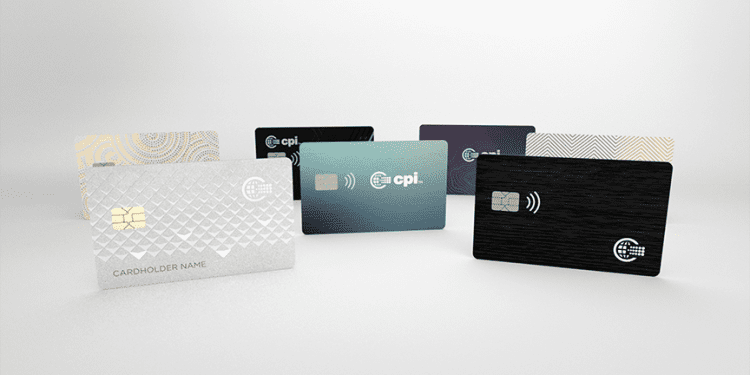For years, metal cards were a symbol of high-end luxury, limited to expensive membership programs with rewards that catered to the affluent. Thanks to greater production innovation in the design and feel of metal cards, as well as more dual interface metal card solutions, many banks and other card issuers are looking to cash in on metal in 2020.
Metal cards have been embraced by consumers and brands looking for ways to distinguish themselves in front of a projected U.S. market of nearly 191 million cardholders by 2022. With the availability of dual interface capability— enabling contactless payment—issuers are now pairing the premium design of metal cards with a frictionless payment experience consumers will likely embrace.
In recent years, many financial institutions have looked to add metal card options to their portfolios. Newly released metal cards are getting smarter, with dual interface EMV® technology enabling both contact and contactless transactions. Some of these newer versions offer increased read-ranges and the ability to transmit from any direction. With contactless payments currently on the rise in the U.S., there is now an opportunity to implement the latest in payment technology alongside the premium tactile feel and sophistication of metal cards.
Greater Design Potential
As card manufacturing processes have evolved, the appeal of cards made with metal has grown remarkably, given their distinct physical features compared to the solely plastic – or PVC – cards that consumers have always known as the norm. Previously, cards created using alloys offered limited design aspects. But today, innovations in manufacturing have produced fusions of metal and PVC, allowing issuers to combine many of the same treatments available on plastic with the weight and durability of a metal component.
Exciting design techniques, finishes, and laser personalization features offer issuers new possibilities in the look of metal cards. With new metal card technology, issuers can offer a customized cardholder experience that can fully reflect their brand. Design features like matte coatings, spot UV gloss, and bright color treatments, give cardholders a sense of exclusivity and can more uniquely showcase the card issuer’s brand. Among other design perks, issuers can take advantage of colored-edge options to complement the design and make it easy to identify in a crowded wallet.
The Weight of Sophistication
In addition to the visual appeal of metal cards, one of the most desirable aspects of metal is its noticeable weight. Cardholders appreciate the sound a metal card makes when pulled out of a wallet and dropped on the counter. To tailor this appeal, financial institutions can increase weight with the choice of material – with encased steel cards at nearly twice the weight of PVC and encased tungsten cards at twice the weight of steel.
Metal cards also offer cardholders a luxurious and pleasing tactile sensation. Encased metal cards, which embed metal between layers of PVC, add dimensional depth to a traditional metal card, elevating its perceived quality and increasing appeal to cardholders. The premium feel of metal cards can create the perception of ‘insider’ membership and sophistication among cardholders. Cards with sleek, minimalist, designs and a heavier feel are geared toward Millennials —providing an added incentive for issuers looking to attract the growing segment of cardholders. While attractive rewards and benefits often drive demand for the product, the card’s physical form can come to symbolize key aspects of what a program aims to represent.
With many consumers adopting a variety of payment methods in their everyday commerce, it will be important for financial institutions and other issuers to ensure that their card programs can accommodate new and emerging trends. The cards that will rise to the top will be those that can easily be distinguished from the rest—and with the design, weight and consumer appeal of metal cards, there’s a bright future ahead.
To learn more about CPI Card Group, click here.











